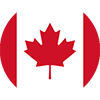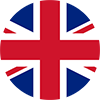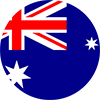Beard Rash: Treatment and Prevention
You know that feeling: you've been growing out your beard, and suddenly you're plagued by beard rash. It's itchy, irritating, and downright uncomfortable. But what causes this unsightly and annoying condition, and how can it be treated or prevented? This article will investigate beard rash, its causes, treatment options, and prevention strategies.

What is the Rash Under My Chin Beard?
If you're experiencing red, itchy, and irritated skin beneath your beard, you're likely dealing with a beard rash. This common problem is typically caused by one or more of the following factors:
- Ingrown hairs: When hairs curl back and grow into the skin, they can cause inflammation and irritation.
- Dry skin: A lack of moisture can lead to flaky, itchy skin beneath your beard.
- Bacterial or fungal infections: Microorganisms can thrive in the warm, moist environment beneath facial hair, leading to infection and irritation.
Does Beard Rash Go Away on Its Own?
In some cases, a beard rash may resolve itself without any intervention. However, if the rash persists or worsens over time, it's essential to address the underlying cause and seek appropriate treatment.
How Long Does Beard Irritation Last?
The duration of beard irritation can vary depending on the cause and the individual. If the rash is due to ingrown hairs or dry skin, it may resolve with proper care within a few days or weeks. However, if an infection causes the irritation, it may take longer to heal and require medical intervention.

How Do You Get Rid of Beard Rash?
To effectively eliminate beard rash, it's essential to identify the root cause and address it accordingly. Here are some strategies to help you find relief:
- Maintain good hygiene: Keeping your beard clean and dry is crucial for preventing the growth of bacteria and fungi that can cause irritation. Wash your beard regularly with a gentle cleanser and pat it dry with a clean towel.
- Exfoliate: A gentle exfoliating scrub or brush can help remove dead skin cells and prevent ingrown hairs. Be sure to use a light touch, as excessive scrubbing can exacerbate irritation.
- Moisturize: Keeping your skin hydrated can help alleviate dryness and itchiness. Choose a moisturizer specifically designed for facial hair, as these products typically contain ingredients that won't clog pores or cause breakouts.
- Treat infections: If you suspect your beard rash is due to a bacterial or fungal infection, seek advice from a healthcare professional. They can recommend appropriate treatments, such as topical antifungal creams or antibiotics.
- Trim your beard: If your beard rash is particularly severe, consider trimming your facial hair to allow your skin to breathe and heal more effectively.
How Do You Prevent a Beard Rash?
Preventing beard rash begins with establishing a consistent grooming routine and caring for your skin. Here are some tips to help you avoid future irritation:
- Wash your beard regularly: Use a gentle, hydrating cleanser to keep your beard clean and free of debris contributing to irritation.
- Condition your beard: Just like the hair on your head, your beard can benefit from regular conditioning. This helps to keep the hairs soft and manageable, reducing the likelihood of ingrown hairs.
- Use a beard oil or balm: These products can help to moisturize your skin and facial hair, reducing dryness and itchiness.
Brush your beard
Regularly brushing your beard with a high-quality brush can help distribute natural oils, prevent tangles, and exfoliate the skin beneath your beard.
- Trim and maintain your beard: Keeping your beard neatly trimmed and well-groomed can prevent hairs from becoming ingrown and reduce irritation. Investing in a good-quality beard trimmer and learning proper trimming techniques will go a long way in maintaining your facial hair.
- Avoid harsh products: Some soaps, shampoos, and other grooming products contain powerful ingredients that can strip your skin and beard of natural oils, leading to dryness and irritation. Opt for gentle, natural products specifically designed for facial hair use.
- Give your skin time to adjust: If you're new to growing a beard or have recently changed your grooming routine, your skin may need some time to adapt. Be patient and allow your skin to acclimate to your new facial hair.
Conclusion
Dealing with beard rash can be frustrating and uncomfortable. Still, by identifying the cause and taking appropriate steps to treat and prevent irritation, you can enjoy a healthy, itch-free beard. Prioritize good hygiene, establish a consistent grooming routine, and choose gentle, high-quality products to keep your beard looking and feeling its best. And remember, if your beard rash persists or worsens despite your best efforts, consult a healthcare professional for guidance and appropriate treatment options.
Related Articles
How to Get Rid of Razor Burn Fast: 10 Effective Solutions






